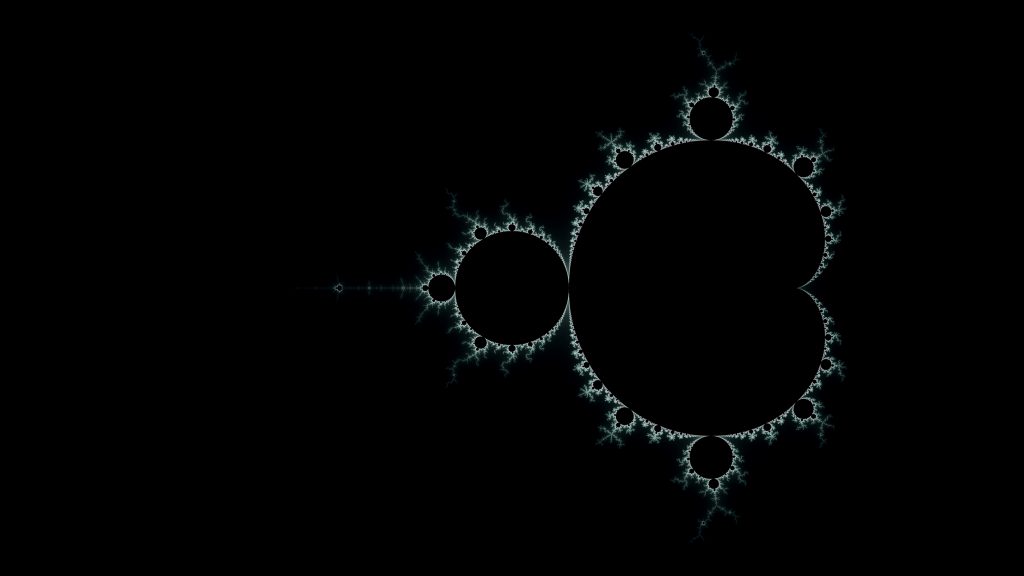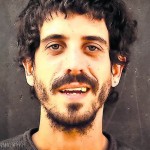Fractal Entrainment: A New Psychoacoustic Technology Inspired by Nature
Biomimicry
“Doing it nature’s way has the potential to change the way we grow food, make materials, harness energy, heal ourselves, store information, and conduct business.”— Janine Benyus

Pattern of grass in the wind
The Biomimicry Institute defines biomimicry as the art and science of seeking sustainable innovation by emulating nature’s time-tested patterns and strategies. It’s a new approach to product design that gives rise to what Janine Benyus calls the Biomimicry Revolution: “… an era based not on what we can extract from nature, but on what we can learn from her.” Whether Fractal Entrainment (FE) can be considered applied biomimicry or not, natural patterns are certainly at the core of this bio-inspired and novel technology, conceived to further harness the transformative power of sound energy.
From the air we breathe, to the patterns of light in the screen that enable us to write and read this, everything in the universe—including the wind, the foliage that reveals its shape-shifting patterns, the image of a starry night and all it might contain and convey, even a heart, pumping in reverence at the wonder of being alive—is said to be composed of vibrating filaments and membranes of energy.
Life is an ongoing succession of ups and downs, comings and goings, twists and turns, yet embracing this is not always easy. We are constantly drifting between states of flow and resistance and experiencing the many possible degrees of balance between those two poles. If consciousness unfolds through the countless intercommunications that our inner and outer “environments” establish moment by moment, it is quite probable that efficiency in information flow might have biological advantages. This is why Fractal Entrainment aims at replicating some of the ways in which nature favors the flow of energy, and the seemingly endless succession of crests and troughs each and every life system and process dances to.
Fractals
“Clouds are not spheres, mountains are not cones, coastlines are not circles, and bark is not smooth, nor does lightning travel in a straight line…”— Benoit B. Mandelbrot

Cracking patterns of dry soil branching out like alveoli
Biologists have traditionally represented nature using Euclidean shapes and models, such as sine waves for heartbeats or simple surfaces for textured “areas,” like the landmass a forest occupies—or even biological tissue in organs and bodily structures. Fractal geometry was advanced by Benoit B. Mandelbrot in his attempt to mathematically formulate the irregularly regular features found everywhere in nature.
Before Mandelbrot’s paradigm-busting work, nature was considered far too irregular to be mathematically modeled with precision. However, scientists have come to realize that fractal geometry is well-suited to describe the intricacy of natural systems and processes, and it has replaced the ideas that dominated our mathematical thinking for hundreds of years.

Image of a Mandelbrot Set
Fractals are complex patterns that are created by repeating a simple process indefinitely. Nature is full of them as it displays repeating patterns that appear on every conceivable scale. Many of the forms and shapes found in nature exhibit some form of self-similarity; larger forms appear to contain smaller copies of themselves at different scales: think of the branching patterns found in trees, neurons, blood vessels, rivers, and lightning, or the ordered spiral arrangement of shells, sunflower seeds, whirlpools, tornadoes, or galaxies.
Mandelbrot defined a fractal as “a rough or fragmented geometric shape that can be split into parts, each of which is (at least approximately) a reduced-size copy of the whole.” Although fractal geometry is closely linked to computer graphics and Mandelbrot’s original work in this domain, the study of recursion started back in the 17th century. A recursive process is one that repeats similar steps many times and is defined in terms of itself—opening up the possibility for an endless loop. Examples of recursion are the matryoshka dolls, each of which contains progressively smaller replicas of itself, or the potentially infinite amount of nested images created by putting two mirrors against each other.
British cartographers struggled with what’s called the coastline paradox: they realized that Britain’s coastline couldn’t be well-defined, because rather than being fixed, the coastline size is relative to the length of the ruler being used, since a shorter one measures more of its “unmeasurable” sinuosity, giving a different result than a longer ruler when drawing a map. Mandelbrot was a brilliant thinker and took all this work further, noting hidden patterns and symmetries by which some day-to-day, unpredictable fluctuations are repeated over larger scales of time.

Coastline, water winding in the mud (low tide)
Recent research in neurocardiology is a contemporary example of looking at processes in this way, for it shows that over longer time scales, coherent rhythms are equally complex and stable. Thanks to this more inclusive model that considers previously overlooked irregularities found in beat-to-beat dynamics, priceless information can be extracted, analyzed, and used in new applications. In other words, the heart is not a metronome as we might have thought!
There are many applications of fractals (including generative art), but they are mostly used in computer sciences. An example common to many of us is the compression algorithms that reduce large image files into smaller and more convenient sizes. Let’s look at one more.
Fractal Entrainment
“Health is the dynamic balance of the spiritual, mental, emotional, physical, interpersonal, and environmental aspects of the organism. The fundamental significance of the interconnected nature of consciousness, primordial elements, subtle energy, and the physical body give rise to a concept of health based on a harmonious flow of life-energy.” —Shamini Jain
Brain waves have tended to dominate our thinking when it comes to entrainment. Thanks to decades of EEG research and countless experiential reports, most subjective states have been described in terms of dominant brainwave patterns, and the variety of “places” we might reach while in meditation have been pretty much mapped.
Applications of this body of work are manifold: think EEG biofeedback devices such as the Mind Mirror, the many spiritual technologies currently being created and developed, or neurofeedback clinics, to name just a few. Sound technologies have also evolved to include these insights, thanks to various precise methods that can guide listeners’ brains to specific brainwave states, so as to induce their associated benefits (see Frequency Following Response (FFR) and/or our technology section for more info).

Crashing waves resembling sparks of lightning
But physiology extends well beyond what’s inside our skulls, so Fractal Entrainment is a slightly less braincentric approach to sound-induced transformation. This nature-inspired technology uses novel acoustic stimulation protocols that further harness the transformative power of sound energy in the most organic way possible.
Engineered to mimic nature’s irregularly regular energy signatures and cycles, FE compositions are partly designed by translating various natural design principles and mathematical ratios into sound. This process of turning data into sound is called sonification and exploits the strengths of our hearing. Our ears are amazing at detecting patterns over time (we hear them as frequencies, harmonic relationships, and timbre), and their temporal resolution is incredibly finer than our vision. Although aesthetic decisions must always be made and included in the process, sonification lets us interact with data in a very different way.
iAwake’s Fractal Entrainment Series celebrates the beautifully unpredictable and harmonic precision that seems to emerge from repeating patterns that are never identical. Conceived to appear simultaneously orderly and irregular, its compositions not only model nature, they also reflect the constant state of transformation through which everything perpetually goes. These are the never-ending ebbs and flows that we are, contain, and are part of, as life unfolds.

Sunrise at the Grand Canyon depicted like roots of a tree or axonal branches in neurons
We believe this approach enhances the effectiveness of sound energy to help us transform, giving rise to more dynamic sessions that can fully engage our physical as well as our energetic bodies. This might be due to their complex and ever-changing sonic scenes and patterns which, devoid of typical compositional elements and mixed with fractal stimulation techniques, allow “the mind to turn inwards,” creating a space in which to just relax into being, or “belax.”
Rather than targeting specific brainwave patterns, FE is designed to meet listeners where they are at, inducing a more dynamic and flexible experience in which users can even learn to actively modulate their inner states by focusing their attention with various degrees of depth. This series attempts to reflect and induce the qualities of various natural processes and states (including the aesthetic experience associated with contemplation), as this seems to induce a natural resonance that is very conducive to experiencing the fluidity of our inner dimensions with less overwhelm.
As one of our testers initially reported with The Spark, “It didn’t feel like entrainment, which really is the highest praise I could offer.”
___________________________________________________________________________
 Javi Otero is iAwake’s Chief Technology Officer and is introducing new and experimental entrainment protocols developed through his ongoing research on further harnessing the power of sound energy. He also offers experiential support with iAwake products, sound technology expertise, and sometimes lends his lyrical hand at writing for iAwake.
Javi Otero is iAwake’s Chief Technology Officer and is introducing new and experimental entrainment protocols developed through his ongoing research on further harnessing the power of sound energy. He also offers experiential support with iAwake products, sound technology expertise, and sometimes lends his lyrical hand at writing for iAwake.
Check out iAwake Technologies’ extensive library of transformational audio tracks here!
Leave a Comment
You must be logged in to post a comment.

Leave your comments below